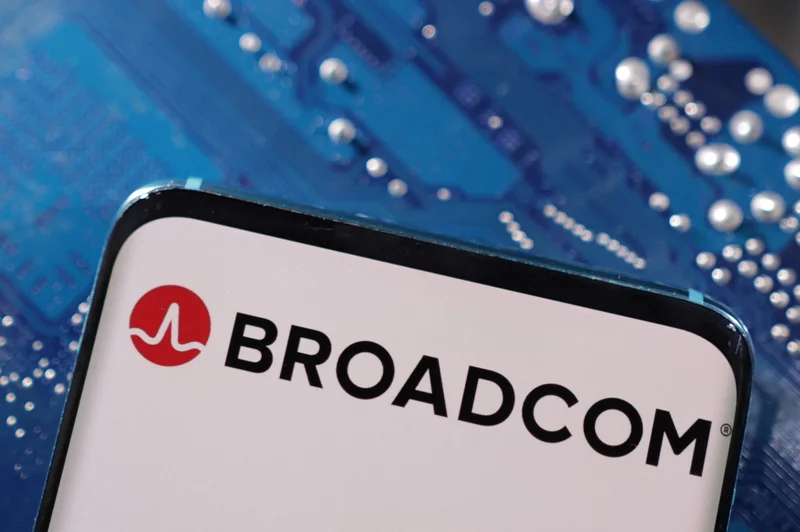Broadcom's AI Surge: Decoding the 10-for-1 Stock Split and What Comes Next
I've Seen the Future, and It's Not On a Screen: Why 'Neural Weaving' Changes Everything
I spend my days thinking about the future. It's my job, my passion, my obsession. But last week, I saw something that wasn't just an iteration or an improvement. It was a full-stop, paradigm-shattering leap. I was in a small, sterile lab at a startup called 'Elysian Minds,' watching a botanist sculpt the DNA of a virtual plant with her thoughts, her hands resting calmly in her lap. There was no screen, no keyboard, no headset. There was just her, a faint tracery of light in the air, and the silent, focused power of her mind. When I saw it, I honestly just sat back in my chair, speechless. This is the kind of breakthrough that reminds me why I got into this field in the first place.
We’ve spent the last 40 years staring at glowing rectangles. Laptops, phones, tablets, watches—our entire digital existence has been mediated through these flat, unforgiving panes of glass. We tap, we swipe, we click. We’ve become incredibly proficient at it, but let’s be honest: it’s a clumsy, unnatural translation. It’s like trying to describe a symphony by writing a letter. You can convey the information, but you lose all the soul, the immediacy, the raw creative impulse.
What I saw in that lab is the beginning of the end for all of that. They call it "Neural Weaving," and it represents a fundamental shift in the human-computer relationship. It’s not a helmet or an implant in the traditional, sci-fi sense. It’s a bio-integrated, non-invasive cortical modem. This is based on a self-assembling protein lattice—in simpler terms, imagine a microscopic, organic spiderweb, delivered via a simple injection, that gently grows with your neural pathways, becoming a seamless, living part of you. It doesn't alter your thoughts; it simply provides a high-bandwidth bridge for them. It’s the difference between shouting across a canyon and having a quiet, telepathic conversation.
What does this mean for us? For you? It means the friction between idea and execution evaporates. Imagine architects walking through their holographic blueprints in real-time as they design them or surgeons feeling the haptic feedback from a microscopic nanobot inside a patient’s artery or musicians composing entire, complex symphonies just by thinking them—the sheer speed and creative explosion this unleashes is almost impossible to fully grasp right now. The gap between the world in our heads and the world we can create is closing faster than we can even comprehend.

More Than Human, or Truly Human?
Of course, the moment you talk about connecting brains to computers, the alarm bells start ringing. I’ve already seen the headlines. One publication ran a piece titled, "The End of Privacy? Neural Weaving and the Threat of the Hacked Mind." And they’re not entirely wrong to be cautious. The ethical questions here are monumental. Who owns the data that flows from your mind? How do we ensure security when the password is, quite literally, your consciousness? These aren't small hurdles; they are mountains we must climb with immense care and forethought.
But here’s the reframing that I believe is crucial: this technology doesn’t have to make us less human. It has the potential to make us profoundly more so. Think about it. How much of your life is spent with your head down, your eyes locked on a screen, your thumbs doing the talking? We walk down beautiful streets staring at our phones. We sit at dinner with people we love, only to be pulled away by a notification. Neural Weaving gives us our eyes back. It gives us our hands back. It allows us to be present in the physical world, to look someone in the eye, while simultaneously accessing the vast digital universe.
This leap feels as significant as the invention of the printing press. Before Gutenberg, knowledge was a locked box, accessible only to a select few. The press didn't just make books cheaper; it fundamentally rewired society by democratizing information. Neural Weaving does the same for creation. It democratizes the act of making, of building, of composing. I was scrolling through a Reddit thread on r/futurology the other day, and one comment just stopped me: "This isn't about becoming a cyborg. This is about removing the clumsy translator (the keyboard, the mouse, the screen) between our thoughts and our creations." That’s it. That’s the heart of it.
Are you an artist who can’t draw? A composer who can’t write music? A storyteller who struggles with the blank page? What happens when those barriers are gone? What masterpieces are currently locked away inside minds that simply lack the technical skill to bring them forth?
The Great Unchaining
Look, the fear of change is natural. But we are not talking about a dystopian future of mind control and machine overlords. We are talking about the next, most natural step in human expression. This is the great unchaining of the human mind from the clumsy mechanics of the physical world. It’s about freeing our creativity, our intellect, and our ability to connect from the glass prisons in our pockets. The future isn’t a screen you look at. It’s a world you think with. And it’s going to be magnificent.
Tags: broadcom stock
The Illusion of 99% AI Accuracy: What the Benchmark Data Actually Reveals
Next PostBMO's Search Identity Crisis: An Analysis of the Bank vs. the Cartoon Character
Related Articles
